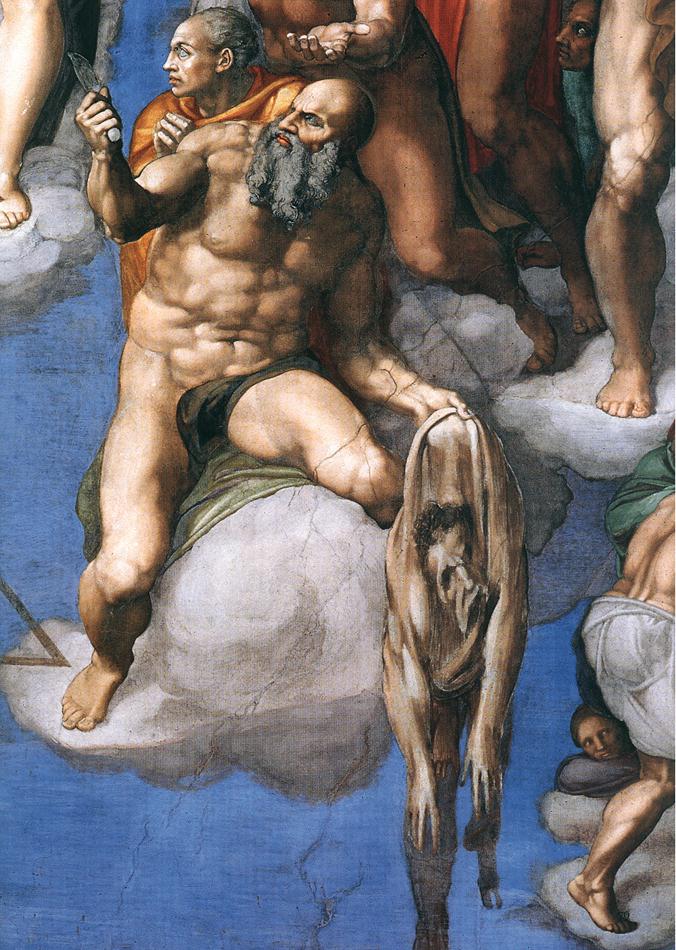Flayed and crucified for spreading Christ’s word through Armenia and India, the apostle Bartholomew was represented horrifically, holding his own skin, in Michelangelo’s Last Judgment in the Sistine Chapel (1536–41). Pinturicchio, who contributed to a fifteenth-century cycle of frescoes in the Sistine Chapel, shows Bartholomew according to earlier Renaissance conventions. The saint stands calmly, looking with a reverent gaze toward his prayer book or Bible. The simple and harmonious image is heightened by a splendid green cloth of honor, ornamented with crosses, that hangs behind the saint. Beginning in the fourteenth century, lavish textiles were included in religious images as symbols of status and holiness. Particularly emphasized are the gilt relief of his halo and a silver gilt knife, also in relief, the attribute that alludes discreetly to his martyrdom. The rich materials of Bartholomew’s book, with its braided tassels, are appropriate for this patron saint of leatherworkers.
|
||||
Michelangelo Buonarroti, Last Judgment (detail), 1537-41, fresco, Cappella Sistina, Vatican [4]
|
Michelangelo Buonarrotti's self-portrait appears twice in the Last Judgment: in the flayed skin which Saint Bartholomew is carrying in his left-hand, and in the figure in the lower left hand corner, who is looking encouragingly at those rising from their graves. The present picture shows St Bartolomew and the flayed skin. In the middle of the Last Judgment fresco on the altar wall of the Sistine Chapel, to the right beneath Christ the Judge, our eye is drawn to the place where the apostle and martyr St Bartholomew is displaying his attributes. In his right hand he is holding the knife with which, as legend had it, he was skinned alive; in his left, he is holding the skin itself, including that of the face, with its tortured folds and demonic hollows. Beholders have always noted the particular similarity of this tattered facial bladder with the famous gnarled and melancholic face of the artist. This dark countenance of the 'divino artista' was known from paintings by fellow artists, and in at least one case from a sculpture by Michelangelo himself. In the Pietà in Florence, the figure of Nicodemus, who is holding the body of Jesus, just taken down from the Cross, close to his breast in sorrow, is probably also a hidden self-portrait. And it has also always struck beholders that the flayed face in the Last Judgment bears no resemblance to the face of the saint sitting on his cloud. Instead, the apostle evinces a fateful and unmistakable similarity with Michelangelo's notorious contemporary Pietro Aretino. Those among the fresco's beholders who recognized this at the time would certainly have heard too of the private feud between the moody giant of art and the intriguing head of the literati [4].
|
|
|
||||
 |
 |
 |
||
Libreria Piccolomini, affrescata da Pinturicchio
|
Biblioteca Piccolomini, affrescchi di Pinturicchio | Scultura delle Tre Grazie, Biblioteca Piccolomini, Siena | ||
Piccolomini Library - Sites - Siena Opera della Metropolitana | operaduomo.siena.it
Art in Tuscany| Pinturicchio
|
||||
This article incorporates material from the Wikipedia article Libreria Piccolomini published under the GNU Free Documentation License. |
||||

